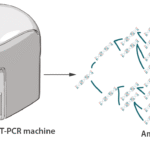To most humans, the average house spider is either a taciturn housemate or an eight-legged hellion. You may appreciate its ethereal webbing or, if you are like many of us, you may run from the room screaming at first sight. But for one team of forward-thinking researchers, this arachnid came to be the focus of an ambitious, futuristic experiment: building the world’s first CRISPR-Cas9 genetically edited spider.
Gene Editing Meets Arachnids
CRISPR-Cas9, the gene-editing weapon that brought its creators a Nobel Prize, is a molecular scalpel. It lets scientists slice parts of DNA and add, remove, or modify genetic material with fantastic accuracy. It’s already being applied in medicine to research and possibly treat genetic diseases, and in biology to unlock life’s inner workings.
But this is not the first time CRISPR has met bugs. Researchers have already genetically modified red-eyed wasps and created gene-edited malaria-resistant mosquitoes breakthroughs that may find their way into public health and ecological studies. Spiders were untouched by gene-editing technologies until now, though.
Why Edit a Spider?
The jump to spiders wasn’t merely a science flex. They spin silk with remarkable strength and elasticity, and their venom holds compounds that might lead to new drugs. Decoding the genetic basis of such capabilities could reveal next-level materials and therapies.
But spiders are notoriously hard to work with at the genetic level. Their intricate reproduction and fragile biology made them slippery subjects for gene editing. That’s what makes this achievement so remarkable; it paves the way for a new generation of arachnid research, combining biotechnology and nature in a truly unprecedented manner.
From Fear to Frontier
With this CRISPR-edited spider, science is not merely reprogramming DNA it’s redefining the way we perceive these tiny, shadowy animals. The common house spider, swatted and reviled, may now be the key to technologies that reach far beyond its web.
One of the reasons why this has never happened before is that spiders themselves are difficult organisms to work with within the laboratory. They are a diverse group, have a complex genome structure, and their cannibalistic nature means that they have to be reared individually, otherwise their cage neighbors would be gobbled up. Despite this, new developments in Parasteatoda tepidariorum have allowed this species to become a research model.
The research team looked into spider silk as the target. Spider silk is an incredibly strong and scientifically interesting substance, as it is five times stronger than a steel cable of the same weight, tear-resistant, while also being biodegradable, lightweight, and elastic.
To genetically modify this arachnophobe’s nightmare, the scientists developed an injection solution. This had a gene-editing system that also included a red fluorescent protein gene sequence. This solution was then injected into oocytes inside unfertilized female spiders, when these spiders mated with males, it resulted in the genetically modified offspring.
Fluorescent gene inserts like the red fluorescent protein are often inserted into the experimental organism, as it is an easy indication of whether it worked or not. If the silk glows under a certain light, then this was a success.We have demonstrated, for the first time worldwide, that CRISPR-Cas9 can be used to incorporate a desired sequence into spider silk proteins, thereby enabling the functionalisation of these silk fibres,” Professor Dr. Thomas Scheibel, Chair of Biomaterials at the University of Bayreuth and senior author of the study, said in a statement.
“The ability to apply CRISPR gene-editing to spider silk is very promising for materials science research – for example, it could be used to further increase the already high tensile strength of spider silk.”
Scheibal
So, while most of us are busy trying to escort spiders gently out of the bathtub, scientists are successfully busy giving them a glow-up…literally.
Reference
Study is published in Angewandte Chemie.
















